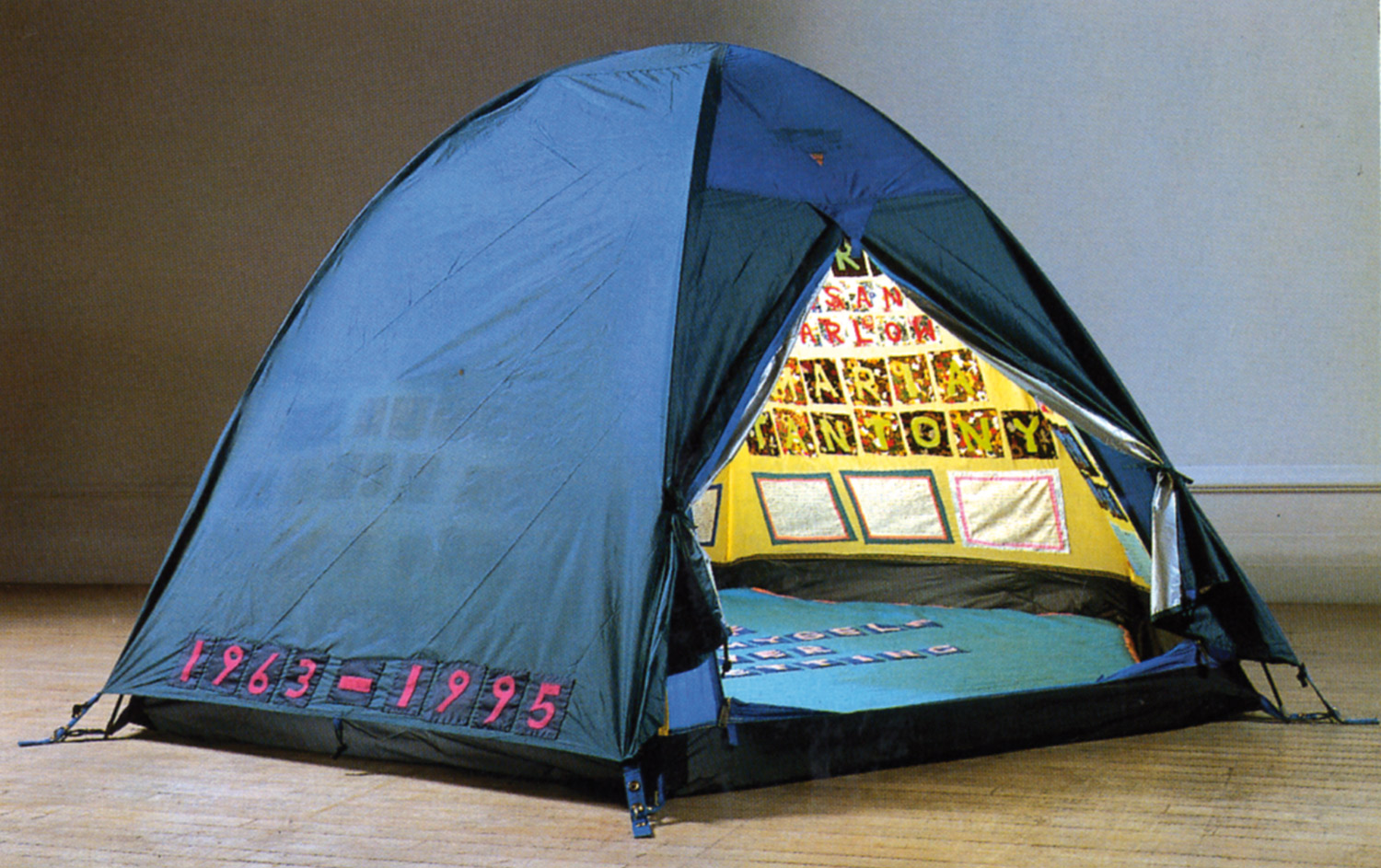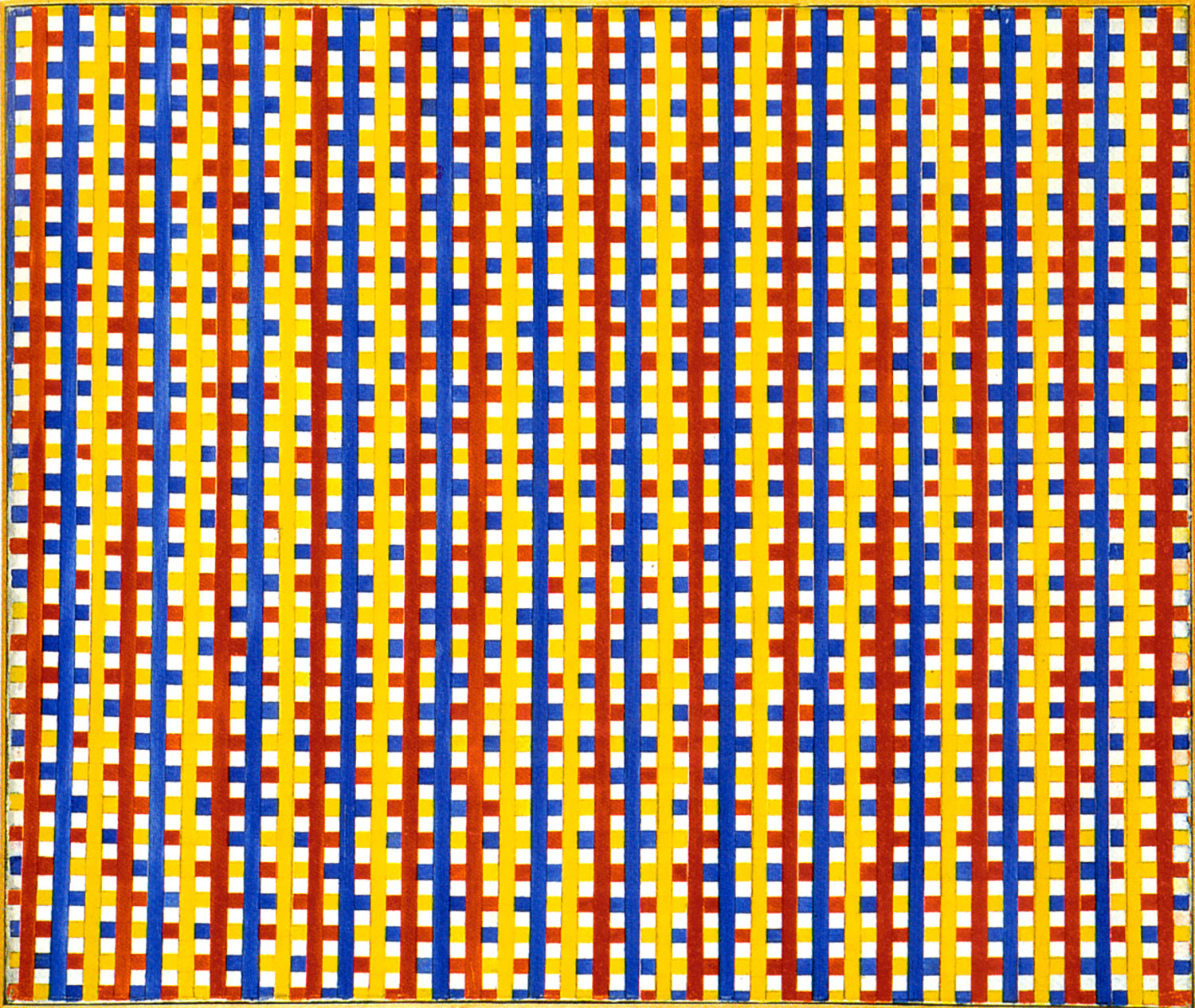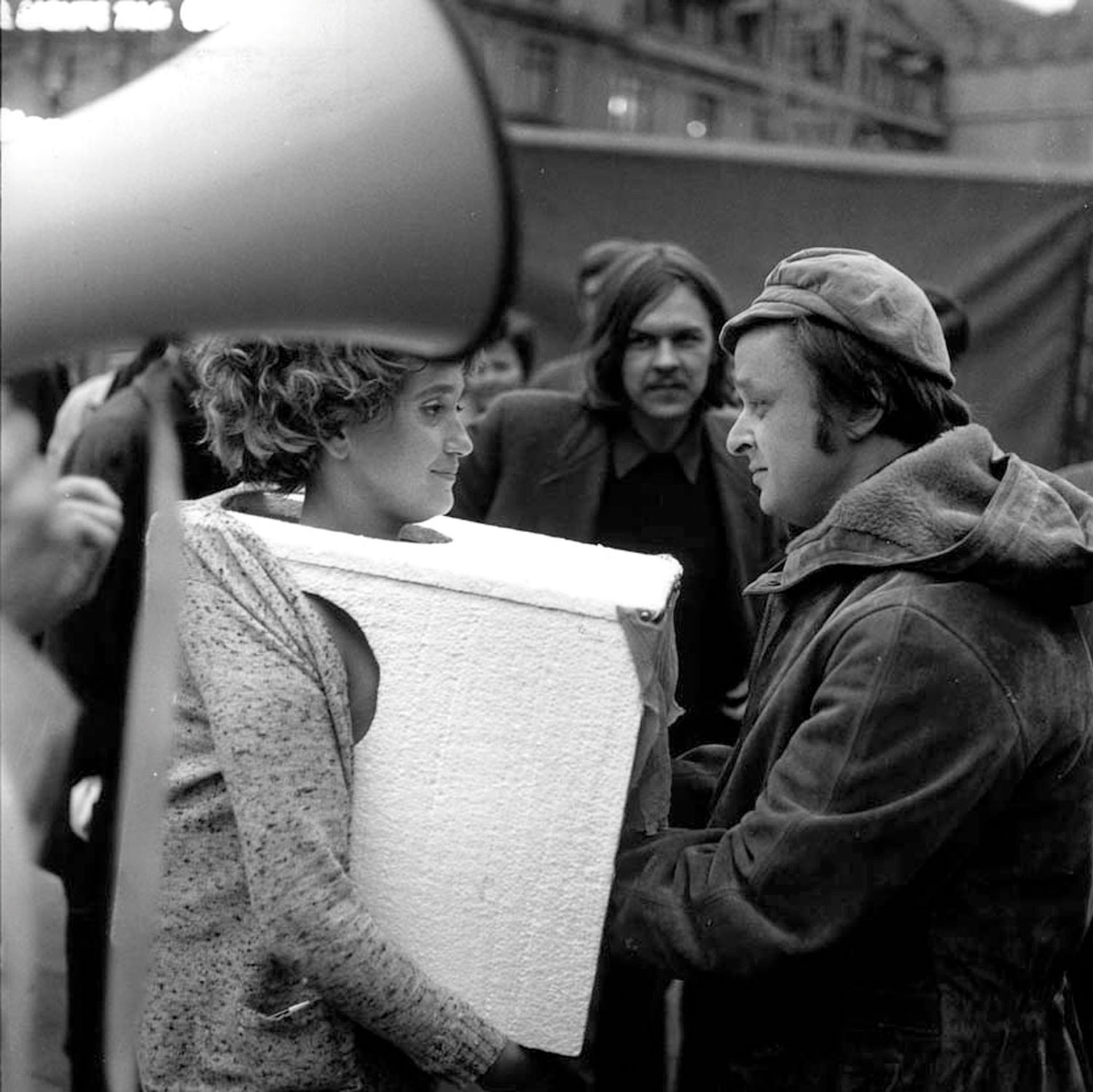
Heather Flow: Studio Voltaire presented your first solo show in 2008 entitled “Divider.” The exhibition featured a series of paintings made either on linen or copper; two maquettes composed of carved bandeau and hook motifs, constructed in plaster, wood and concrete; and the sculpture Divider (2008). The paintings and the sculptures carry aspects of a geometric rhythm and a humanlike figuration. Most of your work seems to balance these two elements. Where does your work begin? — With the medium? With a set structure? Or with a type of living figure?
Nicholas Byrne: I begin with a medium and a drawing process, something of a wrought adornment / grooming ritual ensues. The balance you describe is perhaps determined by private factors, reflecting rooted aspects of my understanding of domination and submission. John Stezaker introduced me to Gaston Bachelard’s The Psychoanalysis of Fire; he describes “philia” as something deceptively other to “phobia.” This difference is something I would relate to the structure in my work, posing how an individual might use their pleasure or exercise restraint.
HF: Your first solo gallery show with Vilma Gold earlier this year contained oil on linen and oil on copper along with a single sculpture of mild steel. As with your exhibition at Studio Voltaire, your sculptures seem to be a type of web, which connects and holds all your paintings together. Can you talk a bit about the relationship between your paintings and sculptures?
NB: On a domestic scale, the paintings in sequence display a set of interiors that retain a certain closeted power or potential to act, and the three-dimensional objects are evacuated from this.

HF: Who or what has had the most influence on your work? Do you see your practice as tied to past British painters such as Graham Sutherland and Francis Bacon, as some critics and curators have speculated?
NB: I am easily influenced. Those British painters might be more of a subject though, in terms of a local / exotic incongruence that occurred to me. Where I first saw this work in museum collections in Northern England, the high aspirations of this locale crossed with the encoded aspects of cultural identity in this body of material. Increasingly, the social currencies that made up this work have formed disparities in my experience of it; these are a renewing influence, for example, that Francis Bacon first traded as an interior designer.
HF: What artists today do you think are playing with similar philosophical and technical ideas?
NB: I was recently invited by Studio Voltaire to make a collaborative work with another artist, Anthea Hamilton, entitled “Calypsos.” This project exploited and played with open systems, philosophical and technical, in each of our works.
HF: For now, what do you see as the next step for your work?
NB: Currently I’m reading Mike Kelley’s “Foul Perfection: Thoughts on Caricature” — foul perfection describing hard and soft core elements in culture like rock and pornography, with examples in art such as Carroll Dunham’s painting — to see where this will take me.





